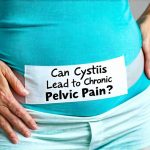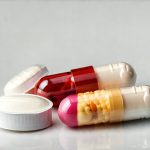Urinary tract infections (UTIs) are among the most common bacterial infections, particularly affecting women. Characterized by symptoms like frequent urination, burning sensation during urination, and cloudy urine, UTIs are often readily treated with antibiotics. However, for some individuals, these symptoms persist long after treatment, or they experience a constellation of pelvic pain, urgency, and frequency without evidence of infection. This is where the connection to interstitial cystitis/bladder pain syndrome (IC/BPS) becomes increasingly relevant – and complex. Understanding the potential links between these conditions is crucial for accurate diagnosis and effective management, as treatment approaches differ significantly.
The frustrating aspect lies in the overlapping symptoms. Many people initially assume persistent urinary issues are simply recurring UTIs, leading to cycles of antibiotic use that don’t provide lasting relief. The ambiguity can be incredibly stressful and disruptive to daily life. While a definitive causal relationship hasn’t been established—the science is still evolving—there’s growing evidence suggesting that past UTIs may play a role in the development or exacerbation of IC/BPS for some individuals. This article will delve into the nuanced connection between these two conditions, exploring current theories, diagnostic challenges, and available management strategies.
The Interplay Between UTI History and IC/BPS Development
The link between UTIs and IC/BPS isn’t straightforward; it’s not a case of one directly causing the other in every instance. It appears that frequent or severe UTIs could be a contributing factor, particularly in genetically predisposed individuals. Several theories attempt to explain this connection. One prominent theory centers around changes to the bladder lining. Repeated inflammation from UTIs can potentially damage the protective glycosaminoglycan (GAG) layer—a crucial barrier preventing irritating substances from contacting bladder nerves. Without this robust barrier, the bladder becomes more vulnerable to irritation and pain.
Another hypothesis suggests that recurrent UTIs trigger an autoimmune response within the bladder. This means the immune system, in its attempt to fight off infection, mistakenly attacks healthy bladder tissue, leading to chronic inflammation and pain. Furthermore, repeated antibiotic use, while necessary for treating UTIs, can disrupt the gut microbiome, potentially impacting immune function and contributing to a cycle of inflammation. It’s important to note that many people experience multiple UTIs without developing IC/BPS, highlighting the complexity of this relationship – other factors likely play significant roles.
Finally, some research indicates that certain bacterial strains associated with UTIs might be able to persist in the bladder wall even after antibiotic treatment is completed, leading to chronic low-grade inflammation and contributing to IC/BPS symptoms. This persistent infection isn’t detectable through standard urine cultures, making diagnosis more challenging. The exact mechanisms are still under investigation, but the evidence points toward a potential connection that warrants further exploration.
Diagnostic Challenges & Differentiating UTIs from IC/BPS
Differentiating between recurrent UTIs and IC/BPS can be exceptionally difficult due to overlapping symptoms. A key distinction lies in the absence of bacterial infection in IC/BPS, even when symptoms mimic those of a UTI. Standard urine cultures consistently come back negative in individuals with IC/BPS, while they typically show bacterial growth in UTIs. However, this isn’t always enough, as some people with IC/BPS may experience intermittent bacterial infections alongside their chronic symptoms, further blurring the lines.
Diagnosis often requires a comprehensive approach that includes: – A thorough medical history, including details about UTI frequency and severity. – Physical examination, including pelvic exam for women. – Urine analysis to rule out infection. – Cystoscopy with hydrodistention, where the bladder is filled with fluid during cystoscopy to assess its appearance and capacity. This can help identify subtle changes in the bladder lining. – Potassium chloride sensitivity test: A small amount of potassium chloride solution is instilled into the bladder; if it causes significant pain, it supports an IC/BPS diagnosis.
It’s vital to rule out other conditions that can mimic IC/BPS symptoms, such as overactive bladder, endometriosis (in women), and prostate issues (in men). The diagnostic process can be lengthy and frustrating for patients, often involving multiple consultations with different specialists. Accurate diagnosis is crucial because treatment strategies differ drastically between UTIs and IC/BPS. Antibiotics are effective for UTIs but will not alleviate the symptoms of IC/BPS and could even exacerbate them in some cases due to microbiome disruption.
Understanding the Role of Inflammation
Chronic inflammation is a hallmark feature of both UTIs and IC/BPS, but its manifestation differs significantly. In UTIs, inflammation is typically acute and directly related to bacterial infection; it resolves with antibiotic treatment. However, in IC/BPS, the inflammation tends to be chronic, low-grade, and often not attributable to a specific infectious agent. This ongoing inflammation damages the bladder lining, increases nerve sensitivity, and contributes to the persistent pain and urgency associated with IC/BPS.
Identifying the source of inflammation is challenging. While bacterial persistence or autoimmune reactions are potential contributors, other factors like stress, diet, and hormonal changes can also play a role in modulating inflammatory responses within the bladder. Biomarkers indicative of inflammation may be present in urine samples, but they aren’t always reliable for diagnosis. Researchers are actively investigating novel biomarkers that could help identify individuals with IC/BPS and track their response to treatment.
The persistent nature of inflammation distinguishes IC/BPS from UTIs. Even when a UTI is successfully treated, the inflammatory cascade may continue in individuals predisposed to IC/BPS, leading to chronic symptoms. This highlights the need for strategies focused on managing inflammation rather than simply eliminating infection.
The Impact of Antibiotic Use
While antibiotics are essential for treating UTIs, their repeated use can have unintended consequences that potentially contribute to the development or worsening of IC/BPS. As previously mentioned, antibiotics disrupt the gut microbiome—the complex community of bacteria residing in our intestines. A healthy microbiome is crucial for immune function and overall health; disruption can lead to imbalances that promote inflammation and weaken the body’s defense mechanisms.
Furthermore, frequent antibiotic exposure may contribute to antibiotic resistance, making it more difficult to treat future infections. It also creates a scenario where the bladder becomes even more susceptible to irritation as the natural protective barrier is compromised by both infection and medication. The cycle of UTIs followed by antibiotics can create a vicious loop that ultimately leads to chronic pelvic pain.
It’s important to emphasize that antibiotics should only be used when a UTI is confirmed through urine culture. Avoiding unnecessary antibiotic use is crucial for preserving microbiome health and preventing the development of antibiotic resistance. Alternative strategies, like increased fluid intake and preventative measures (discussed below), can help reduce the risk of UTIs without relying solely on antibiotics.
Preventative Measures & Management Strategies
For individuals with a history of recurrent UTIs or those concerned about developing IC/BPS, proactive steps can be taken to minimize risk and manage symptoms. These include: – Drinking plenty of water throughout the day – aiming for at least six to eight glasses. – Urinating frequently and completely, avoiding holding urine for extended periods. – Practicing good hygiene, including wiping from front to back after using the toilet. – Avoiding irritating substances like caffeine, alcohol, spicy foods, and acidic beverages (citrus fruits, tomatoes). – Considering D-mannose supplements: Some studies suggest that D-mannose can help prevent UTIs by preventing bacteria from adhering to the bladder wall (consult a healthcare professional before starting any supplements).
For individuals diagnosed with IC/BPS, management focuses on symptom relief and improving quality of life. Treatment options vary depending on the severity of symptoms and may include: – Pelvic floor physical therapy – strengthening pelvic floor muscles can help reduce urgency and frequency. – Bladder retraining – gradually increasing bladder capacity to improve control. – Dietary modifications – eliminating trigger foods and beverages. – Medications – pentosan polysulfate sodium (Elmiron) is sometimes prescribed, though its use has been associated with potential vision side effects, requiring careful monitoring. Other medications may target pain or inflammation. – Nerve stimulation therapies – sacral neuromodulation or percutaneous tibial nerve stimulation can help modulate bladder function and reduce pain.
It’s crucial to work closely with a healthcare provider experienced in treating IC/BPS to develop an individualized management plan. There is no one-size-fits-all approach, and finding the right combination of therapies may require time and patience. A holistic approach that addresses physical, emotional, and lifestyle factors is often most effective.





















